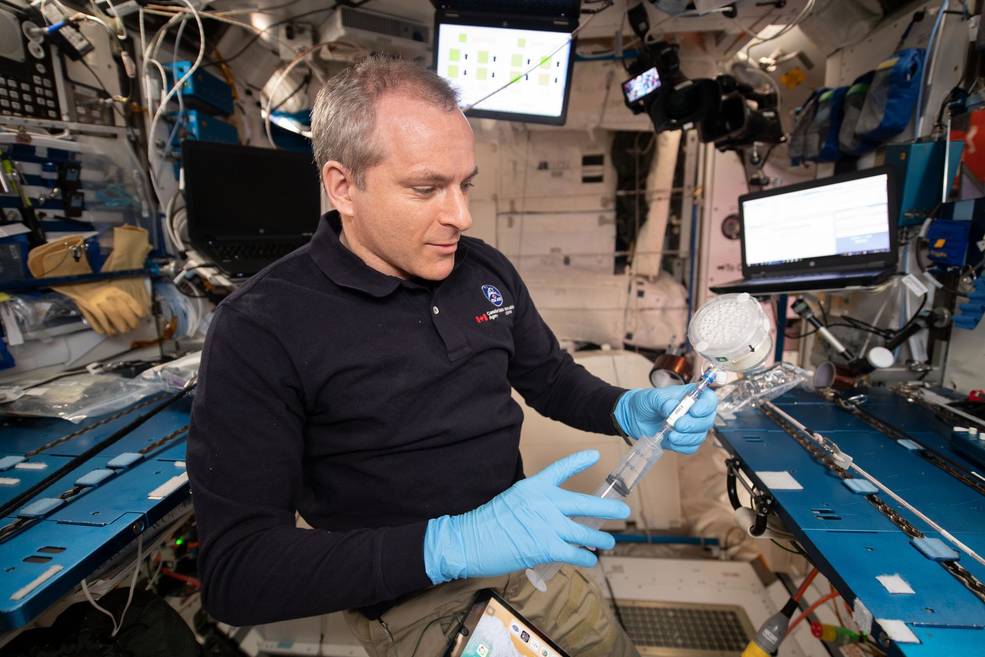
Credits: NASA
NASA will host a media teleconference at 1 p.m. EST Wednesday, Nov. 9, to discuss the hardware, technology demonstrations, and science experiments headed to the International Space Station aboard SpaceX’s 26th commercial resupply mission for the agency.
Audio of the teleconference will be streamed live online at: https://www.nasa.gov/live.
SpaceX is targeting Friday, Nov. 18, to launch its Dragon cargo spacecraft atop a Falcon 9 rocket from Launch Complex 39A at NASA’s Kennedy Space Center in Florida.
One of the payloads aboard the cargo flight is the Moon Microscope kit for in-flight medical diagnosis that includes a portable handheld microscope and a small self-contained blood sample staining device. This will allow astronauts to collect and stain a blood sample, obtain images with the microscope, and transmit images to the ground, where flight surgeons will use them to diagnose illnesses and prescribe treatments.
SpaceX’s Dragon also will deliver new science investigations, supplies, and equipment for the international crew, including the next set of International Space Station Roll Out Solar Arrays (iROSAs). It also will carry a study which will grow dwarf tomatoes as part of efforts to create a continuous fresh-food production system in space, and an experiment that tests an on-demand method to create specific quantities of key nutrients.
Teleconference participants include:
- Kirt Costello, NASA’s chief scientist for the International Space Station Program Research Office, who will provide an overview of the research and technology launching aboard the Dragon spacecrafts
- Gioia Massa, NASA’s space crop production scientist and principal investigator for the Veg-05 study
- Matt Mickle, Boeing’s developmental projects senior manager, who will discuss International Space Station Roll Out Solar Arrays (iROSA)
- Timothy Macaulay, CIPHER vestibular health study lead, an experiment which will use the newly launching Falcon Goggles tool
- Mayra Nelman-Gonzalez, immunologist in NASA’s Johnson Space Center’s Immunology and Virology Laboratory and co-investigator for the Moon Microscope technology demonstration
- John A. Hogan, chief of the bioengineering branch at NASA’s Ames Research Center and principal investigator for the BioNutrients-2 experiment
- A representative for the Extrusion study sponsored by the ISS National Laboratory
To participate in the call, media must contact Lora Bleacher at least two hours prior to the start of the call for dial-in details at: lora.v.bleacher@nasa.gov. Media and the public can submit questions on social media using #AskNASA.
Cargo resupply by U.S. companies significantly increases NASA’s ability to conduct more investigations aboard the orbiting laboratory. Those investigations lead to new technologies, medical treatments, and products that improve life on Earth. Other U.S. government agencies, private industry, and academic and research institutions can also conduct microgravity research through our partnership with the ISS National Laboratory.
Humans have occupied the space station continuously since November 2000. In that time, 263 people and a variety of international and commercial spacecraft have visited the orbital outpost. It remains the springboard to NASA’s next great leap in exploration, including future missions to the Moon under Artemis and eventually Mars.
Members of the public can attend the launch virtually and receive mission updates. To participate, members of the public can register to stay up to date on mission information, mission highlights, and interaction opportunities.
For launch countdown coverage, NASA’s launch blog, and more information about the mission, visit: https://www.nasa.gov/spacex.

